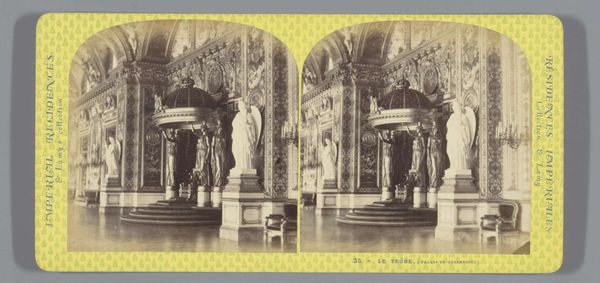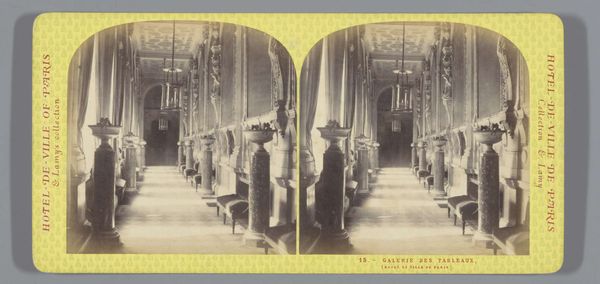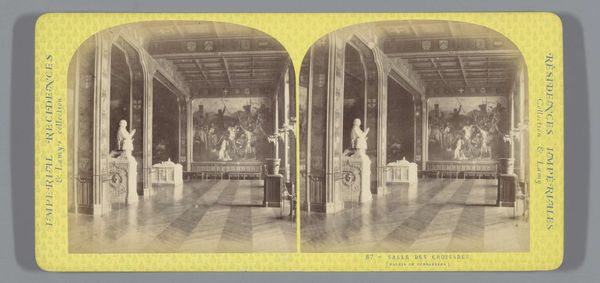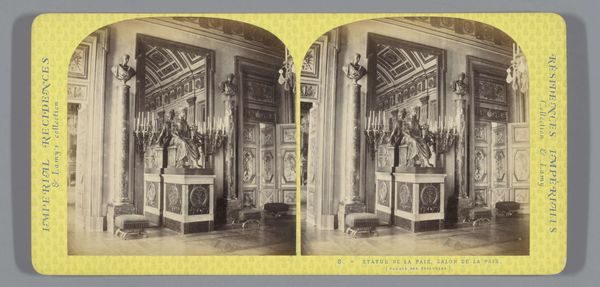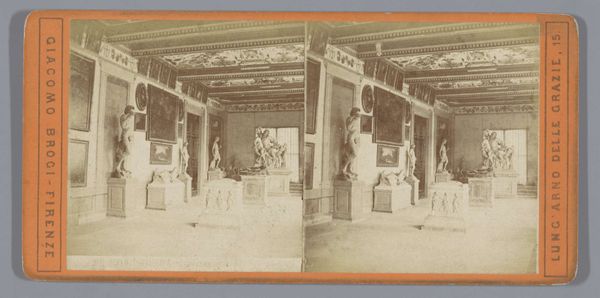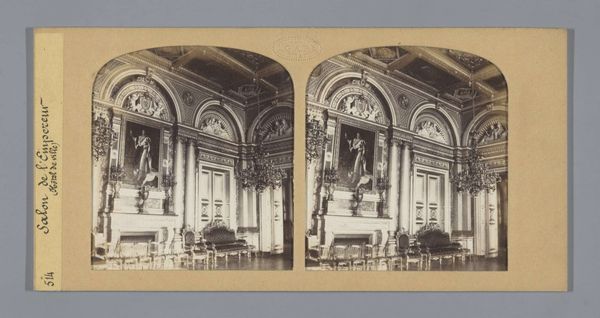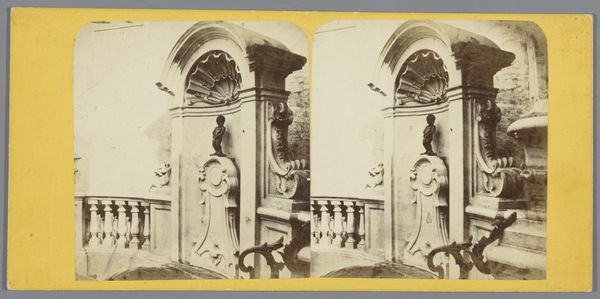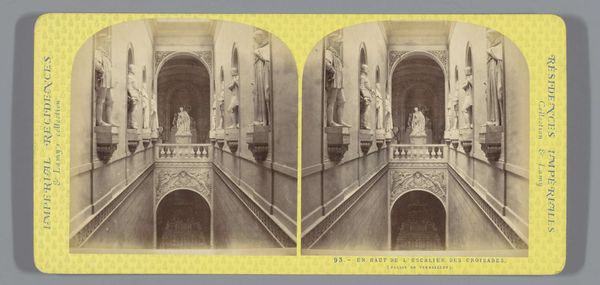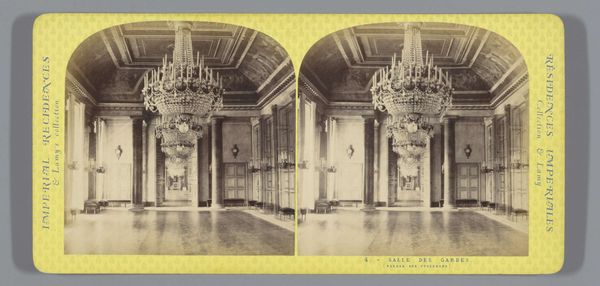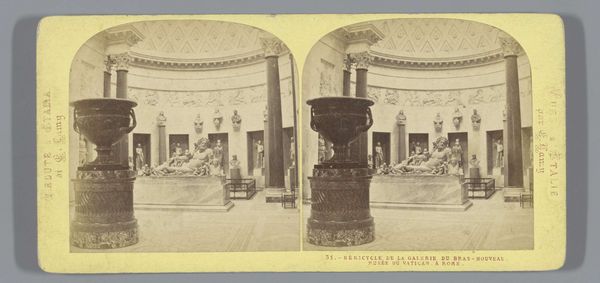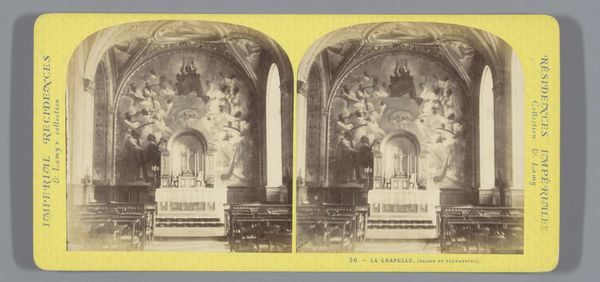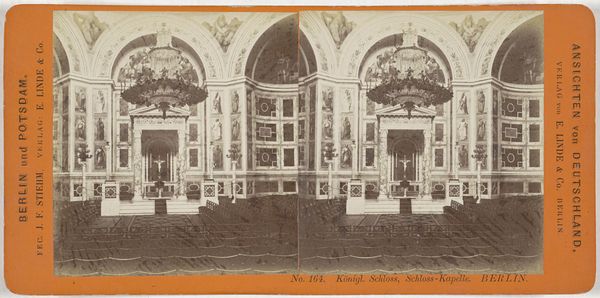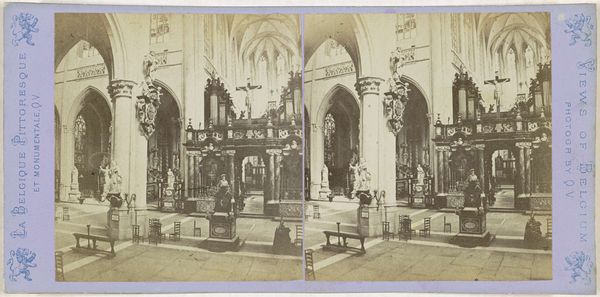
Ingang van de Galleria dei Busti, Museo Pio Clementino, Vaticaanstad 1861 - 1878
0:00
0:00
print, photography
#
portrait
# print
#
greek-and-roman-art
#
landscape
#
photography
#
cityscape
Dimensions: height 87 mm, width 178 mm
Copyright: Rijks Museum: Open Domain
Editor: This photograph, "Ingang van de Galleria dei Busti, Museo Pio Clementino, Vaticaanstad," taken by Ernest Eléonor Pierre Lamy sometime between 1861 and 1878, offers a fascinating glimpse into the Vatican Museum. I am immediately struck by the repetition of the architectural forms; arches, columns and plinths form strong verticals and horizontals. What compositional elements jump out at you? Curator: The structural clarity is indeed compelling. I observe how Lamy uses the geometry of the architecture not just as a backdrop, but as the primary subject. The arrangement of the arches creates a sense of receding space, drawing the eye inward. Note also the interplay of light and shadow, articulating the form and lending depth to the image. Does this linear perspective resonate with established classical ideals for you? Editor: It certainly does! The strong sense of order feels very classical, almost like a stage set. Yet the photographic medium adds a layer of documentary realism that painting or sculpture might lack. Do you think this medium transforms the subject? Curator: Precisely. Photography captures texture and detail with a level of veracity unavailable to prior visual media. We might view the contrast between the smooth surfaces of the sculptures and the rougher textures of the ancient walls as particularly noteworthy in this instance. The tonality evokes an overall sense of the passage of time in that monumental space. It is more than a view, and functions almost as an allegory of cultural history and legacy. Editor: I hadn't considered it as an allegory before, but the comparison is striking! Analyzing the composition this way makes me look at photographs with much more intent and understanding. Curator: This careful inspection reveals an artwork’s hidden structural qualities, and shows its formal language’s complexity.
Comments
No comments
Be the first to comment and join the conversation on the ultimate creative platform.
